By Cassandra Earle
Players cheer from the ice as they finish up their afternoon games. The scores are closely tied. Curlers call to their teammates to “keep pushing!” as players sweep — the motion of brushing a broom back and forth in front of the rock to change how it glides down the ice. Several games are in motion at the same time, the rink is bustling and full of people sliding back and forth from opposite ends of the ice. Once the games end, players high-five one another, walk off the ice, shake hands with their opponents, and head upstairs to the lounge to grab a drink.
This is the Leaside Curling Club. Home to curling, sportsmanship, and community.
A map of the Leaside Curling Club location. (Cassandra Earle/T•)
At the top of the stairs, the lounge is swarming with groups getting ready for the next shift of games. The room is brimming with loud conversation as teammates greet one another and discuss strategy. Tonight’s games are for the adult leagues, but children and teens often play at the club. Trophy cases filled with smooth, gold medals and tall, shiny trophies line the walls. There’s a bar with beer on tap, a warm fireplace, and a white and green banner against the brick wall above, reading “Leaside Curling Club” in block letters.
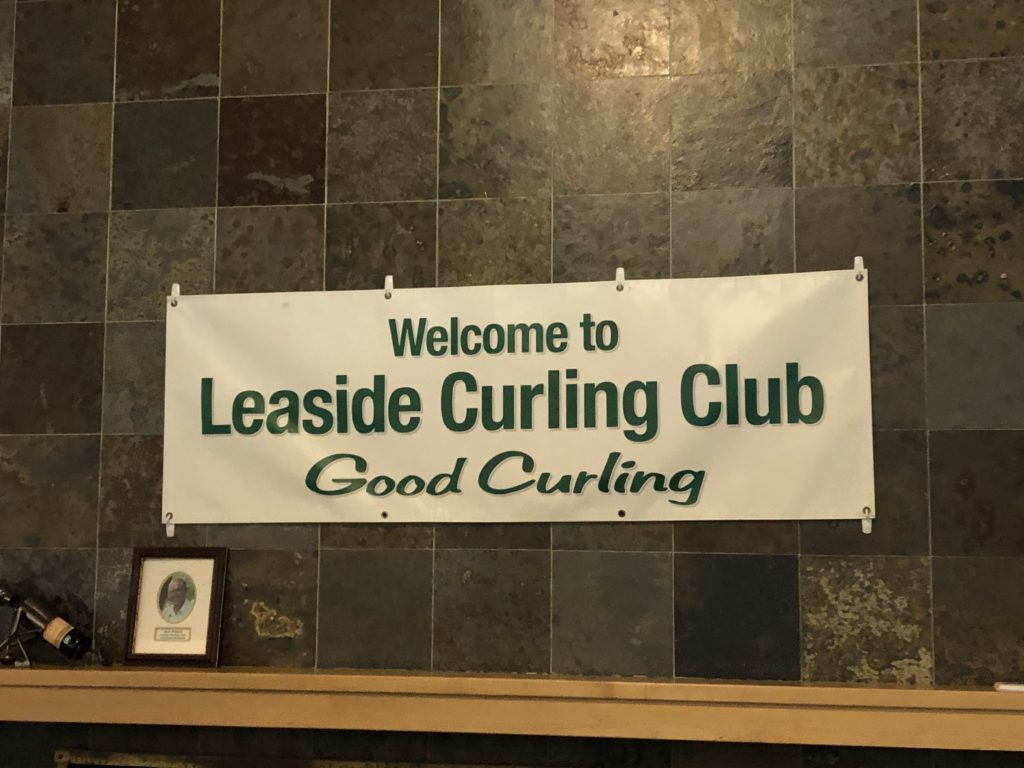
A sign sits in the lounge to greet players before and after their games at the club. (Cassandra Earle/T•) 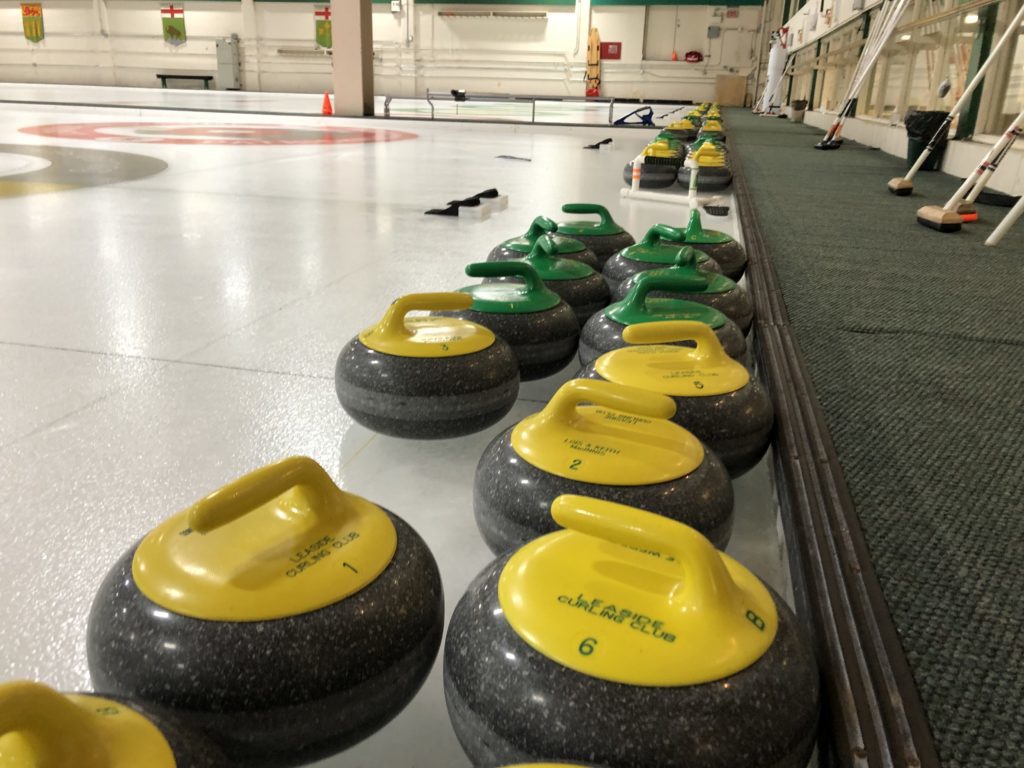
The new rocks sit patiently on the ice, waiting for the next game to begin. (Cassandra Earle/T•) 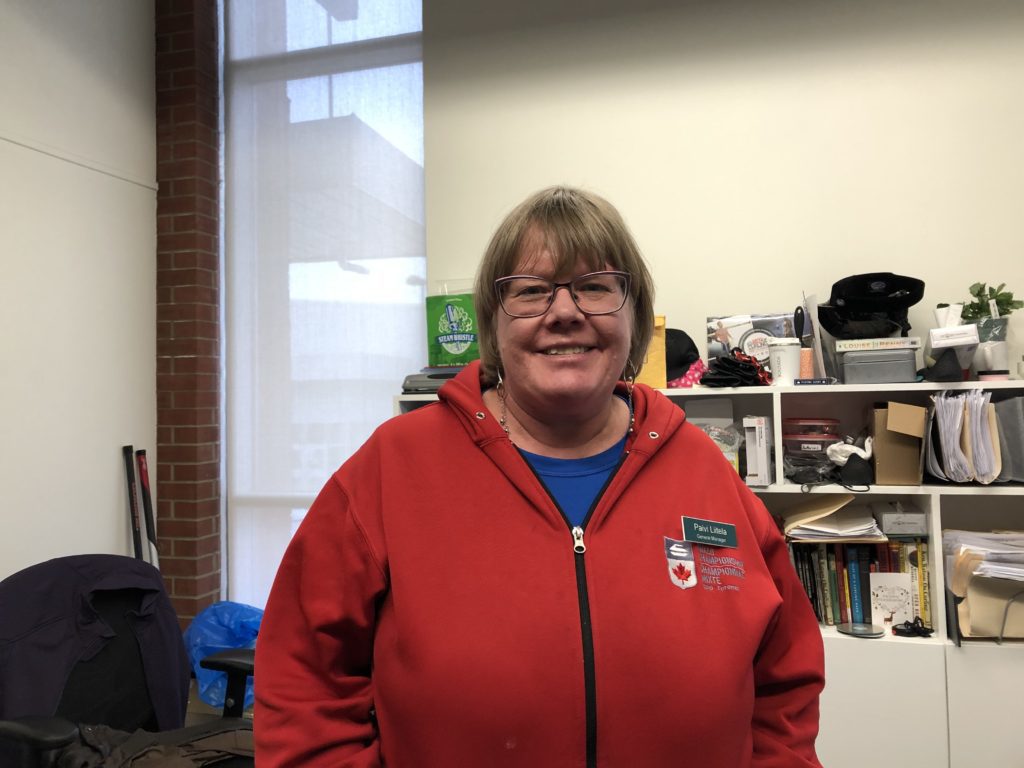
Paivi Liitela in her office before an afternoon shift of games begins. (Cassandra Earle/T•) 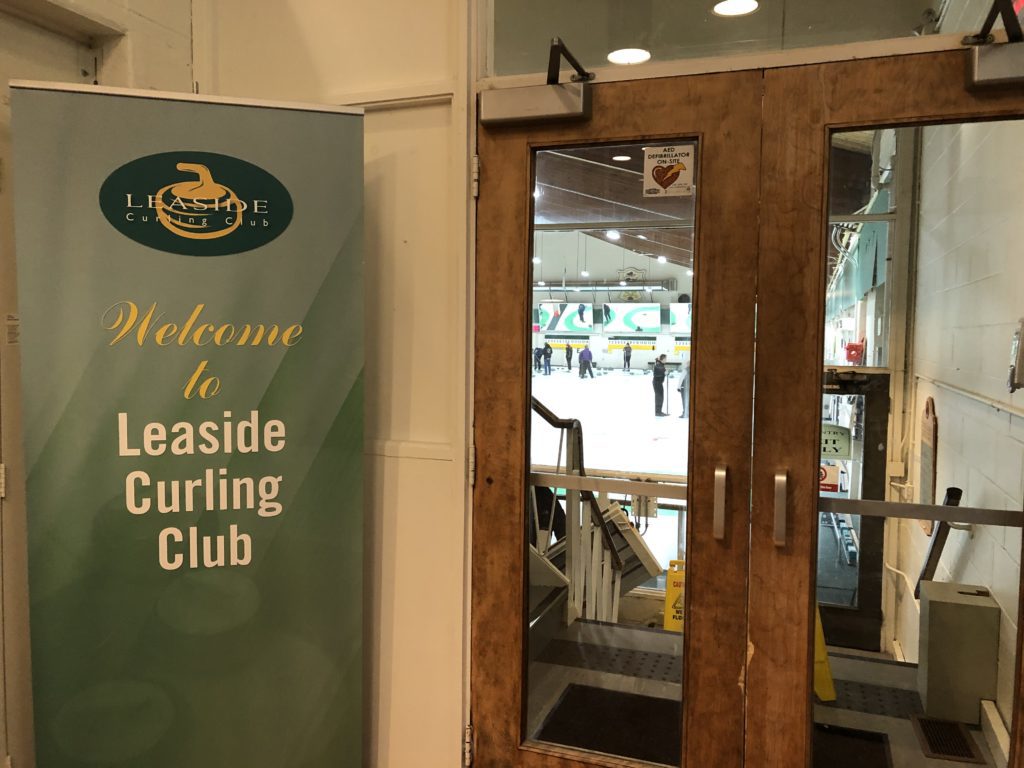
The entrance to the curling club is welcoming as soon as the doors open. (Cassandra Earle/T•) 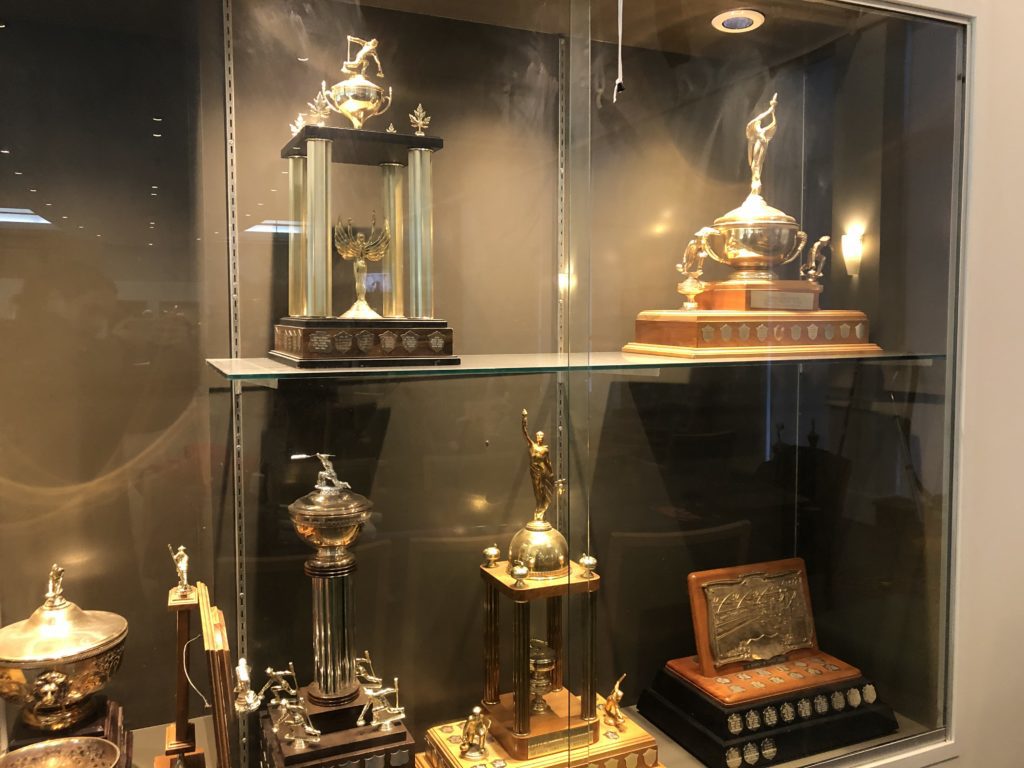
Trophies from league championships and other city/nation wide championships sit in these cases against the walls of the lounge. (Cassandra Earle/T•) 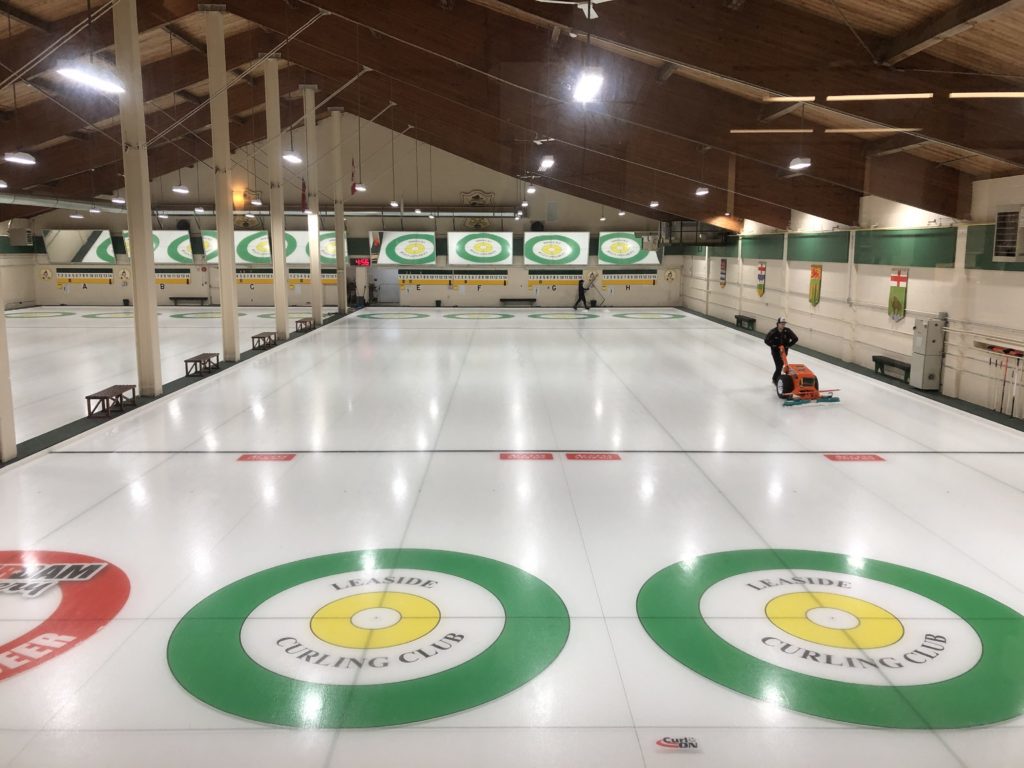
The ice is prepared before afternoon and evening games begin. (Cassandra Earle/T•)
The lounge is the hub of the club. But Paivi Liitela, the manager of the rink, says that it’s more than that — it’s the heart of the sport itself.
“(Curling) is a very social sport,” says Liitela. “It’s enjoyable because you go out, you want to compete, but then you come and you sit and you relax and you have your drink, sit and chit chat … The socialization aspect, I think, is so important.”
As the club slowly fills up with more players, Chloe Marche-Allen and her husband Glen Allen sit on soft, overstuffed leather chairs inside the lounge and lace up their white curling shoes. They exchange laughs as they discuss the community that comes with the sport and why it is one of the reasons they joined a beginners league two years ago.
“It creates a really nice sense of community … you don’t do that in a grocery store or even at work. You’re with the same group of people so it’s nice to see different faces and hear different stories,” says Marche-Allen, smiling.
“You sit down with the team you just played and you chat for half an hour or an hour every game. As you’re playing through the league, you’re meeting everybody … It’s different from when I used to play hockey,” says Allen.
Audio clips of Paivi Liitela, Glen Allen and Chloe Allen-Marche speaking about why they love the curling club and what their roles are. (Cassandra Earle/T•)
According to a Curling Canada 2015 survey, 358,000 people curled 10 or more times throughout the year and it’s estimated that almost 5 per cent of the entire Canadian population curled at some point during the same year. It might not be hockey, but curling is an integral part of many Canadian communities.
“I’m actually from Labrador,” says Marche-Allen. “Coming from a small community that’s very winter-focused, skiing and curling were two of the big things that we did.”
Ronnie Lebi is another player on the couple’s team. Curling brought them together as teammates and now friends. He says that he chose to start curling based on accessibility and how achievable it seemed to learn the sport.
“You don’t have to be terribly athletic … there’s a curling rink in many neighbourhoods,” Lebi says. “It looked rather easy. Now looks can be deceiving, of course.”
The rink itself is a rectangular sheet of ice, with the “house” at the end that acts as a target. Curlers “throw” stones (more like a graceful glide) to the house to earn points. “Hacks” sit at the opposite end of the ice, which are essentially foot-holders to push off from to throw. The “hog line” sits 10 metres from the hack at each end of the ice — for a stone to be in play, it must completely cross this line at the opposing end. Once the stone is thrown, players can begin to sweep, curling the path of the stone as it travels down the ice.
The Leaside Curling Club is home to curling superstar John Epping. He won the Masters Championship in 2018 and the Canadian Open Championship in 2015. Epping says that the club is particularly special to him and his team.
“The curling club is like a second home to me … our team is not only representing ourselves but (also) the Leaside Club. We can feel their support when we’re at events through social media and personal messages,” says Epping. “(It) really means a lot to the team and myself.”
Liitela points to a vertical blue and white banner with hints of gold that sits against the wall in her office. Gold tassels line the bottom of the banner and gently sway against the dark wooden wall. The sunshine pouring in from the tall window behind Liitela illuminates the banner as the specks of gold shimmer. She explains that this particular banner is from a team that won the Toronto Curling Association’s Day Women’s Championship.
“Those are my rock stars. It’s exciting to have all these well-known names come through,” says Liitela, gleaming with pride.
The club loves Liitela right back. Members make an effort to let Liitela know that her work for the club and the long hours she puts in are appreciated.
The curling club is open from September to April for the curling season. League games run almost every evening and on weekends.
Liitela says that she often has to get up early to be at the club for events, but one particular morning was especially difficult. She had stayed late the night before to attend a ceremony where the club received new rocks. The next morning she rushed out the door and didn’t have time to grab her regular morning coffee. When she arrived at the rink, she walked into her empty, dark office to find a Tim Hortons coffee cup was waiting on her desk. It was a token of appreciation from an unknown member at the club who knew she had been working late the night before. Liitela took a picture of the coffee and posted it to the curling club’s Facebook page, thanking the mystery curler. “People are good,” says Liitela, smiling from ear to ear.
“My hope (for the club) is that anyone who comes through the door, they’ve had a good experience and they say good things about us.”
